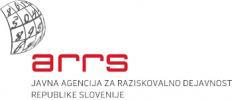Transport land use in Slovenia
Principal Investigator at ZRC SAZU
David Bole, PhD-
Original Title
Transport land use in Slovenia: changes and effects on everyday living
Project Team
Maruša Goluža, PhD-
Project ID
Z6-4030
-
Duration
1 July 2011–1 April 2014 -
Financial Source
Javna agencija za raziskovalno dejavnost Republike Slovenije

In this post-doctoral research, we have looked into the scope of transportation land use in Slovenia, the reasons for its transformations, their links to social factors and the effects of these changes on the local environment. The increasing mobility of the population is a solid fact – we use cars to drive ever more often and travel farther. The analysis of transportation land use has shown that the growing need for mobility is giving rise to an increasing amount of transportation areas in Slovenia. Between 1999 and 2011, the transportation area increased by 45 km2 to reach 463 km2, which represents 4.2 % of the Slovenia surface.
The main reason for this increase are larger infrastructural projects, mainly motorway and railway construction. Transportation areas are also on the rise in some most sparsely populated parts of Slovenia (the Triglav National Park, etc.), where new roads are being built in the vicinity of cities due to the suburbanization. The highest percentage of new transportation areas is due to road construction (83 %).
Figure: Transport land use in Slovenia in 2011.
Furthermore, we have analyzed the impacts of population “automobilization” on the local environment and its inhabitants. The analysis of eight typical urban neighbourhoods, built at different periods of time, has shown that newer neighbourhoods that emerged following the 1990-ies are more attuned to car drivers than pedestrians or cyclists. Older urban neighbourhoods also increasingly submit to the dictates of the car in cutting down on green areas and non-motorized transportation areas. Contrariwise, the analysis of four types of suburban settlements (two agglomerated and two dispersed ones) has not confirmed the hypothesis that newer suburbanized areas subject to the needs of the car driver to a great degree.
Figure: An example of detecting transport land use in a neighbourhood with the help of semiautomatic DOF classification.
Finally, we have analyzed the subjective views of local inhabitants with regard to transportation infrastructure, based on the data gathered in the Housing survey. We have surmised that while people rate the condition and availability of transportation areas lower than sustainability at least in principle. Good transportation infrastructure is considered more important than other factors when asked to evaluate their own personal values and specific factors that impact their living conditions. “Automobilization” is thus not only a fact that bears a spatial dimension with its accompanying increase in transportation areas, it also has social and psychological implications.

